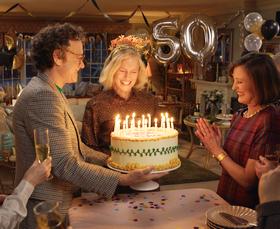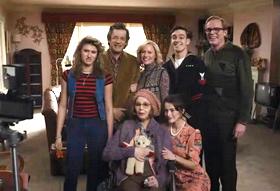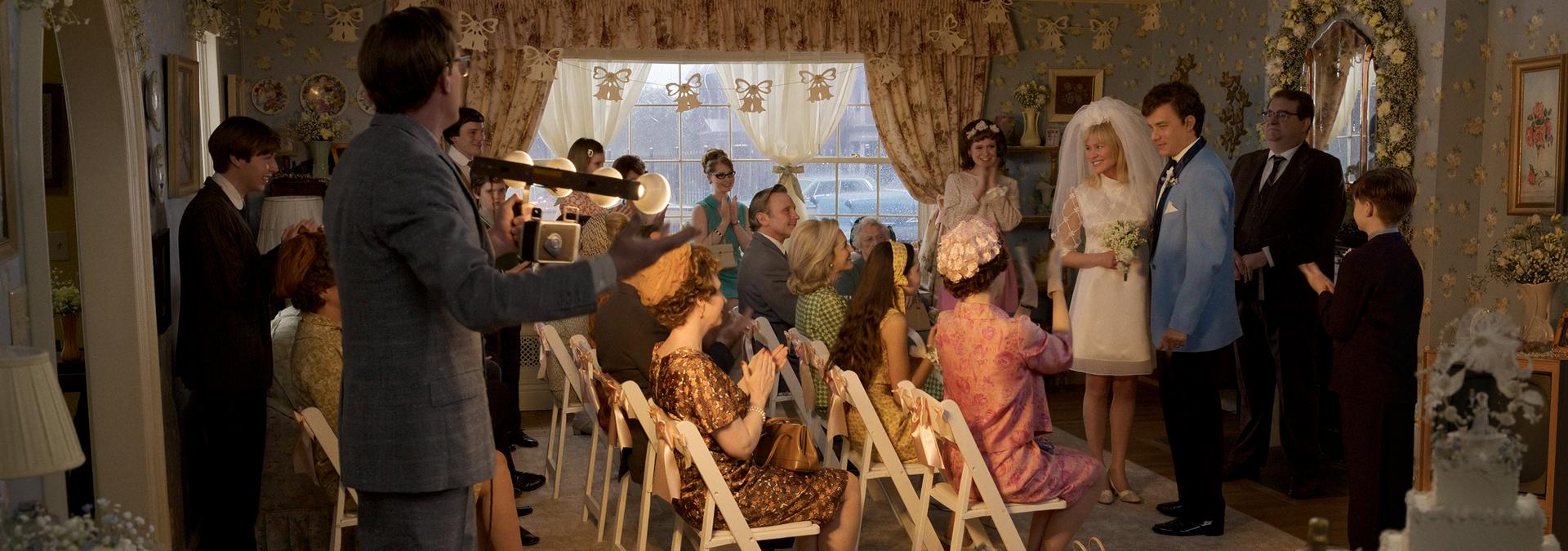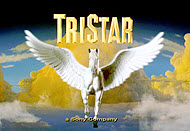Here
 for thematic material, some suggestive material, brief strong language and smoking.
for thematic material, some suggestive material, brief strong language and smoking.
Reviewed by: Keith Rowe
CONTRIBUTOR
| Moral Rating: | Offensive |
| Moviemaking Quality: |
|
| Primary Audience: | Young-Adults Adults |
| Genre: | Drama Adaptation |
| Length: | 1 hr. 44 min. |
| Year of Release: | 2024 |
| USA Release: |
October 25, 2024 (festival) November 1, 2024 (limited) November 15, 2024 (wide release) DVD: January 21, 2024 |






Aging
Passage of time / Life is short

What is the MEANING OF LIFE? To glorify God, and to enjoy Him forever. The Word of God, which is contained in the Scriptures of the Old and New Testaments, is the only rule to direct us how we may glorify and enjoy Him. The Scriptures principally teach, what we are to believe concerning God, and what duty God requires of us.
| Featuring |
|---|
|
Tom Hanks … Richard Young Robin Wright … Margaret Young Paul Bettany … Al Young Kelly Reilly … Rose Young Michelle Dockery … Mrs. Pauline Marter See all » |
| Director |
|
Robert Zemeckis |
| Producer |
|
Miramax ImageMovers See all » |
| Distributor |
The movie opens during the prehistoric age with volcanoes belching lava and a pack of dinosaurs pursuing their prey. After the dust from an asteroid crash causes an ice age, we’re brought forward in time to when indigenous people settled in a forested region that we now call North America. But then, quicker than you can say “Mayflower,” the forest is cleared and an estate is erected during America’s colonial period.
Years later, a humble home is built across the street from a mansion, and that abode becomes the locus of action for the rest of the movie. The main storyline picks up after WWII when returning soldier, Al Young (Paul Bettany), and his young wife, Rose (Kelly Reilly), move into the house. When Al and Rose’s adult son Richard (Tom Hanks) marries Margaret (Robin Wright), the newlyweds move into their house to save money.
With the exception of a few minor events that transpire in other time periods, the balance of the movie focuses on the Young family over the span of several decades.
This film comes to us courtesy of some of the top names in Hollywood. The film is directed by Robert Zemeckis of “Back to the Future,” “Contact” and “Cast Away” fame. In the leading roles are Hanks and Wright, who also starred in the director’s smash hit, “Forrest Gump.” Another frequent contributor to many of Zemeckis’ films is composer Alan Silvestri, who delivers a tender, deeply-affecting score here that rivals his best work. The screenplay was written by Zemeckis and Eric Roth, based on the 2014 graphic novel of the same name by Richard McGuire.
“Here” tells an unusual story of the many lives that inhabit the same physical space (plot of land and the house built on it) over the course of many centuries. This multigenerational story begins during prehistoric times and ends in present day America. Though it boasts an undeniably novel concept—that seems better suited to a sci-fi epic than an intimate family drama—will the movie’s constant jumping between timelines confuse or exhaust its audience?
The visual cue that lets us know when we’re transitioning from one era to another is a simple rectangle, which can vary in size and appear at random places on the screen. A different timeline coalesces inside this rectangle and, after an indeterminate interval, the shape expands to fill the entire screen, replacing the previous scene. In this way, these window panes serve as time portals through which we visit the many historical periods featured in the story. Since this visual device is used throughout the nearly 2-hour movie, will the audience eventually find it tedious?
Also, since most of the story takes place in the same room (and is shot in the same direction), the bulk of the claustrophobic film comes off like a glorified stage play. Plus, will those who watched the trailer, which mostly focuses on the Young family and sells the movie as a straightforward drama, feel cheated by the sprawling story replete with period-hopping crosscutting?
Another questionable creative choice is the use of de-aging software (in this case, a new AI tool called Metaphysic Live was employed) on some of the key actors. This technology works well enough in dimly-lit interiors and in medium shots, but is less convincing in close-ups. I’m no FX expert, but in observing mocap or deep fake shots (especially of well-known actors) in TV series and films, a la “Rogue One: A Star Wars Story,” it seems like these CGI shots grow more conspicuously fake as time passes.
But all is not lost, the movie’s acting is stellar…in any time period. Though Bettany and Reilly play second fiddle to Hanks and Wright, they turn in excellent performances; Bettany’s portrayal of the hard-of-hearing, shell-shocked Al is finely attenuated. Also, impressive, in a meager role, is Michelle Dockery, who plays the fretting wife of an airplane pilot in the early 1900s.
Of course, I’d be remiss if I didn’t mention the other generation-spanning film Hanks starred in, “Cloud Atlas.” Fortunately, “Here” has little in common with that jumbled mess of celluloid. That’s all I have to say about that.
It’s been observed that Zemeckis has a penchant for foregrounding existentialism in his films. This can be observed in the way a feather randomly floats on the wind in a handful of scenes in “Forrest Gump” and in the circuitous journey of the lost train ticket in “The Polar Express.” In “Here,” the existential symbol is a hummingbird that flits in and out of several scenes.
Objectionable Material
OFFENSIVE LANGUAGE/VULGARITIES: It’s really disappointing that this family-focused film is so saturated with swear words. There’s far more offensive language in this PG-13 flick than in many R-rated films. The movie’s prolific vulgarities include: p*ss (1), pr*ck (2), sh*t (5), b*llsh*t (2), *ss (2), b*st*rd (1), and the F-word (1). It also contains a shocking array of irreverent speech, like:J*s*s Chr*st (2), J*sus (1), Chr*st (1), Chr*st Alm*ght* (3), G*d d*mn (4), G*d d*mm*t (2), G*d (1), My G*d (1), Swear to G*d (2), Oh, My G*d (2), G*d help me (2), Good L*rd (1), Thank G*d (1), h*ll (1), d*mn (6), d*mm*t (1), and d*mnd*st (1). Apologies if I missed a few expletives, but in some scenes they were so rapid-fire, I literally couldn’t write them down fast enough.
NUDITY AND SEXUAL CONTENT: There are no sex scenes, per se, in the movie. However, characters are seen kissing in a few scenes and two couples, fully clothed, make out with one person laying on top of the other. One woman wears loose clothing that bares her midriff in a few scenes. Later, the same woman poses nude in an armchair as her husband takes pictures of her. Though plenty of skin is shown, there’s no nudity in these scenes. In an unnecessarily creepy moment, Al tells young Richard about the time he took a woman up to his hotel room. In a highly suggestive scene, we hear adult Richard unbuckling his belt, lowering his zipper and dropping his pants—the action takes place below the camera. In the next scene we see Richard, in his boxers with his pants down around his ankles, following Margaret upstairs to the bedroom. Al tells a crass joke about mature women in one scene. Richard references a time he and Margaret made love on the sofa.
VIOLENCE AND GRAPHIC CONTENT: There isn’t any violence in the movie. The only graphic moment comes when Al tells Richard about the time one of his military buddies got his jaw blown off.
ALCOHOL/DRUGS: In the first half of the movie, Bettany’s Al always has a beer bottle or glass of hard liquor in one hand, and often a cigarette in the other. During several Thanksgiving feasts, various family members are seen drinking wine with their meal. Drinks are mentioned by name in certain scenes, such as bourbon and a highball.
Spiritual Aspects
The film centers on several meaningful aspects of life including family, legacy, memories, and major events such as marriage, the birth of a child, and the loss of a parent.
One of the main themes is the fleeting nature of life; Richard frequently makes statements like, “time sure does fly.” This is a sobering reminder of the brevity of life and that we should make the most of every opportunity we’re given. Watching the generations fly by confronts us with our own mortality, and may cause us to consider what we’re passing on to the next generation.
Yet you do not know what your life will be like tomorrow. You are a vapor that appears for a little while and then vanishes away. —James 4:14
Therefore look carefully how you walk, not as unwise but as wise, redeeming the time, because the days are evil. —Ephesians 5:15-16
Because they had to make money and raise a family, some of the characters live with regret that they never got to pursue their dreams (Richard wanted to be a painter, Rose wanted to be an accountant, and Margaret wanted her own house). One of the hardest things to accept is that the plans we have for our life might not coincide with God’s perfect plan for our life.
For I know the thoughts that I think toward you, says the Lord, thoughts of peace and not of evil, to give you a future and a hope. —Jeremiah 29:11 NKJV
It’s ironic that Margaret hates Richard’s parent’s house, yet at the end of the movie she says she loves it, not because of the physical space, but because of the people that inhabited it and the wonderful memories they made together. This is a poignant principle: a house is just a structure, it’s the people that make it a home.
Another topic the film briefly touches on is worry. For years, Richard thought worrying would keep painful things from happening to him and his family. Later, he admits to Margaret that existing in a perpetual state of worry prevented him from really living. The Bible offers sage advice on the subject in Matthew. Also, Matthew 6:27 underscores the futility of worrying by posing this question, “Can any one of you by worrying add a single hour to your life?”
Therefore I tell you, do not worry about your life, what you will eat or drink; or about your body, what you will wear. Is not life more than food, and the body more than clothes? —Matthew 6:25
Richard’s excessive worrying and refusal to move out of his parent’s house causes a rift in his marriage. Eventually, Richard and Margaret part ways. It’s unclear whether the couple is separated or divorced. Also, unclear is if they’ve reconciled by the end of the story. At the very least, they seem to be friends again.
Since God instituted marriage (Matthew 19:6) and hates divorce (Malachi 2:16), it grieves Him when couples like Richard and Margaret separate or choose to end their marriage.
The most overtly Christian aspect in the movie comes when a young girl prays to God to help her find a missing item. On the topic of prayer, when Richard and Margaret sit down to a Thanksgiving meal, Richard says a secular prayer that expresses gratitude for the food, but fails to identify the provider of the feast… no mention of God or Jesus. Sad.
In the foreground of the opening, prehistoric sequence we see a pool of primordial ooze. It’s almost as if Zemeckis has placed a Looney Tunes sign next to the slime pit that reads, “This is where you came from!” By now, the theory of Evolution has been debunked by most reputable scientists. Individuals seeking knowledge of where we came from should read Genesis chapters 1 and 2 rather than Darwin’s On the Origin of Species. The fact that Zemeckis starts his film with this image is disgraceful. Perhaps he wanted to stage his own version of the aspiring ape scene at the beginning of “2001: A Space Odyssey.” Or maybe he just had a yen to create a dinosaur sequence. Either way, this opener adds nothing to the movie, but may serve as a deceptive trap for those unfamiliar with the true Creation account in the Bible.
Q & A
 How is it possible for reasonable, intelligent, well-educated people to hold such diametrically opposite views as Evolutionism and Creationism? Answer
How is it possible for reasonable, intelligent, well-educated people to hold such diametrically opposite views as Evolutionism and Creationism? Answer
 Evidence against Evolutionism and for the Creator. Our SuperLibrary is provided by a top team of experts from various respected scientific creationist organizations who answer your questions on a wide variety of topics.
Evidence against Evolutionism and for the Creator. Our SuperLibrary is provided by a top team of experts from various respected scientific creationist organizations who answer your questions on a wide variety of topics.
Final Thoughts
“Here” is a decent drama delivered by some of Hollywood’s finest talent, both in front of and behind the camera.
Though it has many moving moments (like the montage depicting Al’s passing, or the final scene when Margaret remembers finding her daughter’s blue ribbon in the couch), the movie, as a tapestry of disparate plot threads, isn’t nearly as beautiful or indelible as it could’ve been. The major detractor here is the underdeveloped sidebar stories. Excising these extraneous elements could’ve produced a stronger story about the Young family; more time spent on the ancillary kids and grandkids may have forged a deeper empathy for the entire family, which could’ve created a richer cinematic experience.
In the end, “Here” is an ambitious effort that capitalizes on superb directing and acting and frequently hits the nostalgia button with its period-appropriate clothes, cars and interior decorations, but ultimately falls short of being a cinematic achievement.
During the final scene of the movie, Margaret says, “I love it here.”
I wish I could say the same, but unfortunately clean entertainment moved out in the 40s and was replaced with vice and profanity.
If you’re looking for something family-friendly and faith-affirming, you might have better luck at the neighbor’s house…‘cause you definitely won’t find it here.
- Vulgar/Crude language: Very Heavy
- Profane language: Heavy
- Wokeism: Moderately Heavy
- Sex: Moderately Heavy
- Nudity: Moderate
- Drugs/Alcohol: Moderate
- Violence: None
- Occult: None
See list of Relevant Issues—questions-and-answers.


PLEASE share your observations and insights to be posted here.


My Ratings: Moral rating: Average / Moviemaking quality: 4½